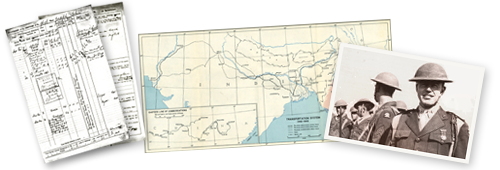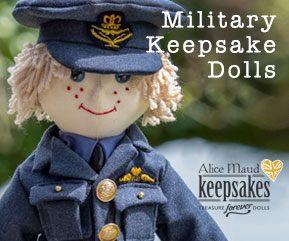British Military History
The online resource covering 1930- 1950 British Army, British Indian Army and Britain’s Allies
This website covers the British Army and British Indian Army before, during and after the Second World War, in the time period from 1930 to 1956. It provides an overview of the Arms and Services, formations and units, orders of battle for various formations, chronology of key events, history and personnel of higher formations, some divisional histories, biographies of notable personnel and regiments of the British and British Indian Army.

The casualties incurred by the British Army between 3 September 1939, and 31 August 1945 were:
Killed or Died of Wounds – 105,872
Died of Injuries or Accidents – 18,735
Died of Disease as Prisoners of War – 6,319
Sub Total Deaths – 130,926
Wounded – 239,619
Missing – 8,882
Prisoners of War and Internees – 41,109
(Source – RUSI Journal 1946)
» A note from the author, Robert Palmer ...

It covers the period from 1930 to 1950. This is to include the build up to the conflict, and the immediate aftermath. To many soldiers, the end of the war did not mean an end to armed conflict, as several small wars erupted in the Indian sub-continent, South East Asia and Palestine.
The focus is on the British Army, the pre-partition Indian Army (also known as the British Indian Army) and those of the Dominions (Australia, Canada, New Zealand and South Africa). The British colonies in East and West Africa and the Far East also provided many soldiers to fight for the British Army, so are integral to this web-site. Without the support of countries in the British Empire, the United Kingdom would have struggled to prosecute the war. This is particularly the case in the Middle East and Far East.
The documents are written in a style that I hope readers will find interesting and informative. I was awarded a Master of Arts degree in British Military History (Second World War Studies) at the University of Birmingham in December 2015. I use a variety of sources, having about 1,000 books and documents in my library. I am a Friend of National Archives, and visit regularly. I use the British Library, regimental museums, local libraries, historical societies and other sources.
The website is updated with new or amended material as I research and write it. Any inaccuracies are mine, as are any comments contained on the web-site. The website is now over ten years old, and has recently been completely upgraded in conjunction with my website provider. I am a private individual, and welcome financial support to maintain and develop the website. I value constructive comments or feedback, as this process improves knowledge and understanding. I hope that people researching their family history, military historians and others wishing to know more about British Army and British Indian Army during the Second World War will find this web-site informative and useful.
Best Wishes.
ROB PALMER
Officially, the Second World War ended in 1945, but its legacy continues today some seventy-five years later. British troops are only now being withdrawn from bases in an independent European country, namely Germany. For many years, the U.K. maintained a sizeable military garrison in another country – why? Germany itself was reunified only as recently as 1990, after being divided in 1945. It was not until December 2006 that the U.K. finally paid off its financial debts accrued to the U.S.A. during the Second World War. Tensions continue between Japan, China and Korea that date from this period, and the origins of the Permanent Five members of the Security Council, and the European Convention on Human Rights, are other legacies of this global conflict.
Those who lived through the war, and are alive today, are becoming fewer. Memories fade and life moves on, but, just two generations back in history, the world was engulfed in a war of savage and brutal proportions. Millions died as man’s capacity to inflict appalling horror on other men, women and children rose to new heights. Yet, for some, the Second World War brought opportunity, comradeship and a sense of purpose.
Help me to continue
Help this website to continue by making a donation using the Paypal Donate button below. If you would like to help this website continue through advertising or sponsorship – please contact me. Many thanks.
Privacy Statement and General Data Protection Regulations
I do not hold personal information on individual living people, except for contact details which people disclose in order for me to respond to a request for information, or other matter. It is necessary for me to retain these details in order to reply to requests, but once that enquiry is complete, I securely delete all contact details supplied three months after completion. This three month period is to allow for any follow up correspondence. I do not hold a database of people for mailing newsletters, or unsolicited correspondence, and neither do I supply any personal information to a third party.
I do not hold service records of any member of the armed forces, other than historical information on deceased persons of interest to my research. Applications for service records should be made through the Veterans Agency of the Ministry of Defence.







